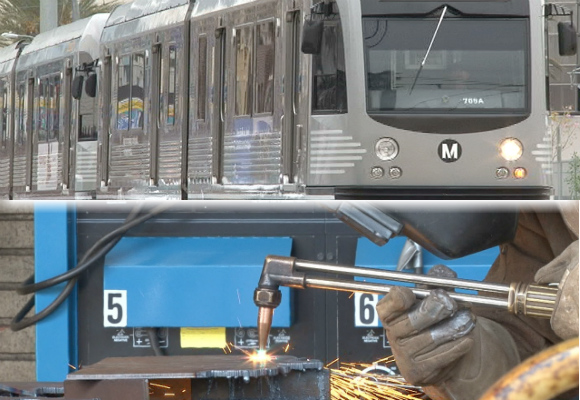
(Photo Credit: John Guenther)
In his two major public appearances this week, Gov. Brown offered a broad vision for California’s sustainable growth that aligns closely with the goals of the California Economic Summit.
While his State of the State address Monday focused on the urgent need to prepare the state for a changing climate, the governor’s budget released today highlights the state’s renewed efforts to combat income inequality and prepare Californians to compete in the global economy through smart investments in workforce training and the state’s infrastructure.
“In a state that is home to more billionaires and a higher percentage of people living in poverty than anywhere else in the country, where our economy depends on mountain snowpacks likely to dwindle in a warmer future, and where we are likely to face a shortfall of as many as two million skilled workers in the decade ahead, there is no doubt about the urgency of these efforts,” said Summit Steering Committee co-chairs Paul Granillo, president & CEO of the Inland Empire Economic Partnership and Eloy Oakley, superintendent-president of Long Beach City College.
“Led by champions from all of the state’s regional economies, the Summit has made these issues our top priorities, and it is heartening to see them moving to the top of the state’s agenda,” Granillo and Oakley said. “As the debate continues over how to advance prosperity, we believe there is no better partner than the Summit, a growing coalition of public and private-sector leaders committed to the sustainable growth of our economy.”
A boost to workforce training
The proposed budget’s biggest boost to the Summit agenda came in the area of workforce training, with the governor injecting $1.2 billion into the effort and explicitly acknowledging the need to coordinate the state’s array of education programs—from K-12 and higher education to workforce investment boards and social services agencies—with the needs of regional economies.
The budget puts money directly into expanding adult education and career technical education—two of the Summit Workforce Action Team’s highest priorities—while creating an additional $25 million “innovation fund” for the California State University system, on top of the $50 million competitive grant program created last year to support new approaches to higher education programs.
“These proposals are a huge step in the right direction, and it’s to the governor’s credit that workforce training has become such a top priority,” says Alma Salazar, vice president of education and workforce development at the Los Angeles Area Chamber of Commerce, who also serves as co-lead of the Summit Workforce action team.
“These proposals provide funding right where it’s needed, supporting efforts to build a coordinated framework for adult education, career technical education, workforce investment, and apprenticeships. They will help workers in California develop the skills they need for self-sufficiency and greater personal advancement. We look forward to helping ensure they’re part of the final budget.”
Setting the table for an infrastructure debate
As he did last year, Gov. Brown also used his budget as an opportunity to highlight two of the state’s biggest funding shortfalls—pointing to a $66-billion backlog in deferred maintenance on transportation infrastructure projects and a shrinking pool of funds available for the construction of K-12 schools.
In both cases, the governor argued that existing funding streams are inadequate to tackle these challenges—with transportation bond funds running out and the state emphasizing local funding for schools. “We’re spending a lot of money and we have a lot of different revenue sources. It’s hard to find more,” Brown said today, promising to lead an effort to engage constituency groups in developing creative solutions—and noting that each year that goes by without investment in the state’s deteriorating infrastructure raises the costs of modernizing the system.
“We do have a need and we’re going to have to take care of it and see if we can do it in a bipartisan way because that’s the only way we can do it,” Brown said about transportation infrastructure, in particular.
The Summit has been pushing for this same approach, while noting that the state’s infrastructure challenges are even more daunting than the governor has acknowledged. California’s roads and highways are indeed facing a $66-billion backlog in maintenance, but the price tag on needed investments for the state’s entire transportation infrastructure—from highway rest areas to bridges and drainage facilities—is actually much higher. The California Transportation Commission has put the figure as high as $500 billion over the next ten years, just to bring the system up to a state of “good repair.”
Investments on this scale will demand a new ways of approaching the problem—one the Summit is helping test this year through the creation of new “Enhanced Infrastructure Financing Districts,” a local authority that allows cities and counties to tap into an array of new funding streams, including private financing, as they work together on infrastructure projects.
“The Summit certainly welcomes a discussion about the state’s infrastructure needs—and we hope we can make it as broad as possible,” says Mark Pisano, senior fellow at USC’s Sol Price School of Public Policy, who also serves as co-lead of the Summit Infrastructure Action Team. “Infrastructure investments can not only help us prepare for a growing population—and create greener, more sustainable communities—they can provide a steady source of jobs in the meantime.”
California’s prosperity, in other words, depends on it.

